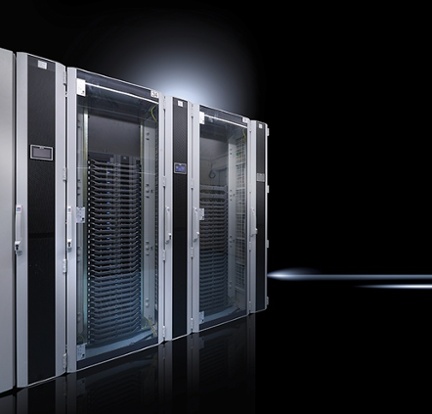Guest Contributor: Rittal
With the growth of Artificial Intelligence or AI machinery that takes in information, learns and makes decisions, Edge computing will become not only necessary, but mandatory. The need to process data at the source to ensure acceptable performance will continue to grow with AI and AI will only be able to grow as fast as data storage capabilities grow. 
To ensure acceptable performance of data processing at the source and reduce latency, Edge Computing will become more important. Formerly only used by large corporations, Edge is now being utilized by small to medium businesses that need services such as peer-to-peer networking, mobile signature analysis, mobile data acquisition, and AI. In the case of machinery, this puts Edge Computing outside of a traditional data center environment and the need for small portable data centers with cooling will spread. According to a recent IDC study by 2020, more than 70% of infrastructure-centric partners will become involved in IoT and Edge Deployment.

Rittal started in the Industrial Market which is geared towards machinery and outside applications including dust/moisture proof NEMA 12 enclosures here in the U.S. in the 1980’s. Rittal continues to lead the world in global enclosure solutions that include all types of environments. From dirty and extreme temperature fluctuations, to typical clean and climate-controlled environments, Rittal has the right solution for you.
Edge Computing Defined
Edge computing houses data processing capability at or near the “edge” of a network. Usually, servers are contained in a micro data center, with as few as one or two enclosures. Data which is mission-critical, such as a system fail, is captured and available in real-time on site. Edge computing is valuable in capturing bandwidth intensive and latency sensitive data for analysis, lowering operating costs and improving energy efficiency. Lower priority data can be sent to the cloud or to a remote data center.
In Edge Computing, client data is processed at the periphery of the network, as close to the source of the originating data as possible. Companies are moving toward edge computing, driven by economics and efficiency. In edge computing architecture, critical data is processed at the point of origin via a server in close proximity to the output, for immediate and easy access. Data which is not as time sensitive is sent to the cloud or a data center for longer term storage, analysis or compliance record keeping.
The practice of edge computing alleviates the load on network resources. By processing data at the source, only the data required for transfer is shifted to a remote data center or cloud. The amount of data transmitted reduces the strain on bandwidth, and by specifying criteria, data can be sorted to provide key analytics at the site and to push non-essential data to the center.
With IoT and the proliferation of smart devices, edge computing becomes particularly valuable when massive data pushes would overload a data center. When monitoring enclosure temperature for example, it is unnecessary to upload data which will only be valuable to the operations manager in real time. If this data has historical value, it can be pushed to a data center at a later time, or when bandwidth is not at a premium. With edge computing, this illustrates one of its major benefits.
Since edge computing reduces response time to milliseconds, adjustments at the site level can be made almost simultaneously. However, the cloud and data centers will not be made obsolete, since the long term storage capacity is still needed.
Although edge reduces latency and improves accessibility, security concerns and configuration architecture must be addressed. With the distributed architecture of an edge security system, points are increased for system attack. Security breaches and infectious malware may be introduced at vulnerable points.
With the configuration of the device, secure default passwords need to be placed on each device, and vigilance applied to the updating of software to avoid infiltration of malware. Even with the potential points of vulnerability, the overwhelming advantage of the decreased latency and the instant data accessibility overwhelming support the use of edge computing to improve efficiency.
Learn more: https://www.rittal.us/contents/category/products/data-center-solutions/